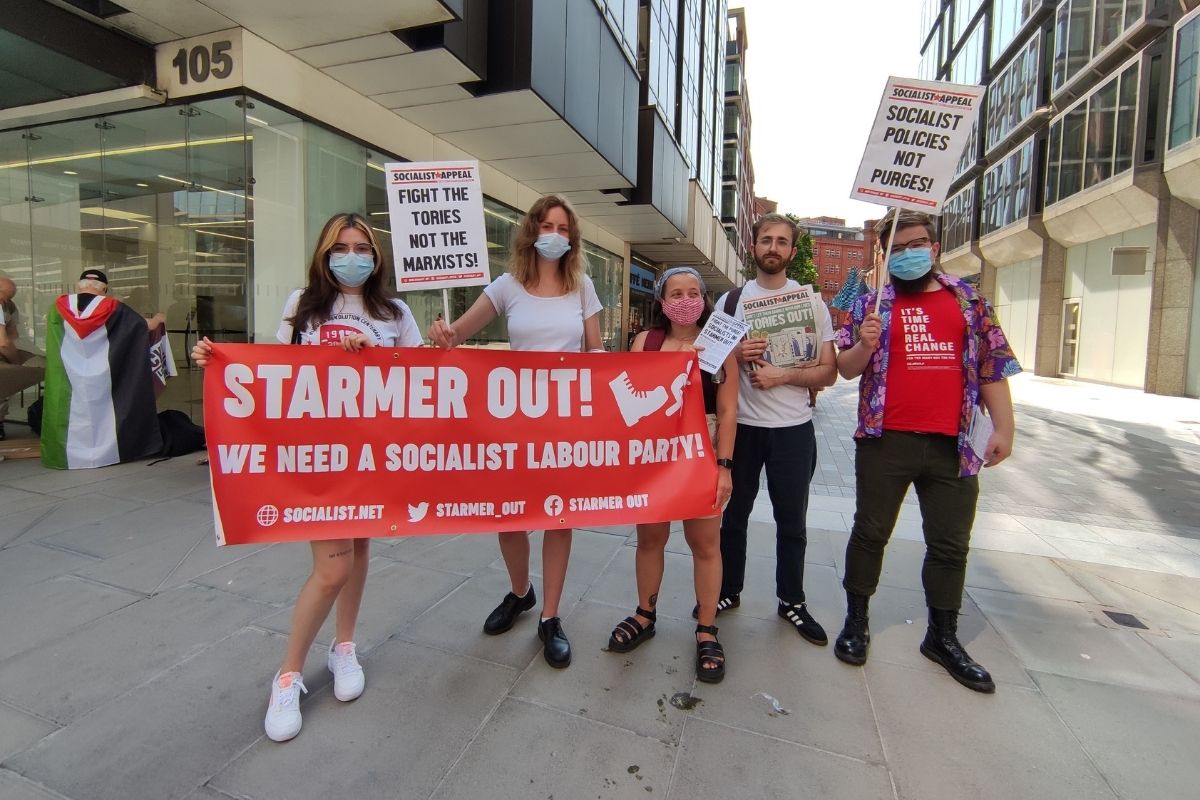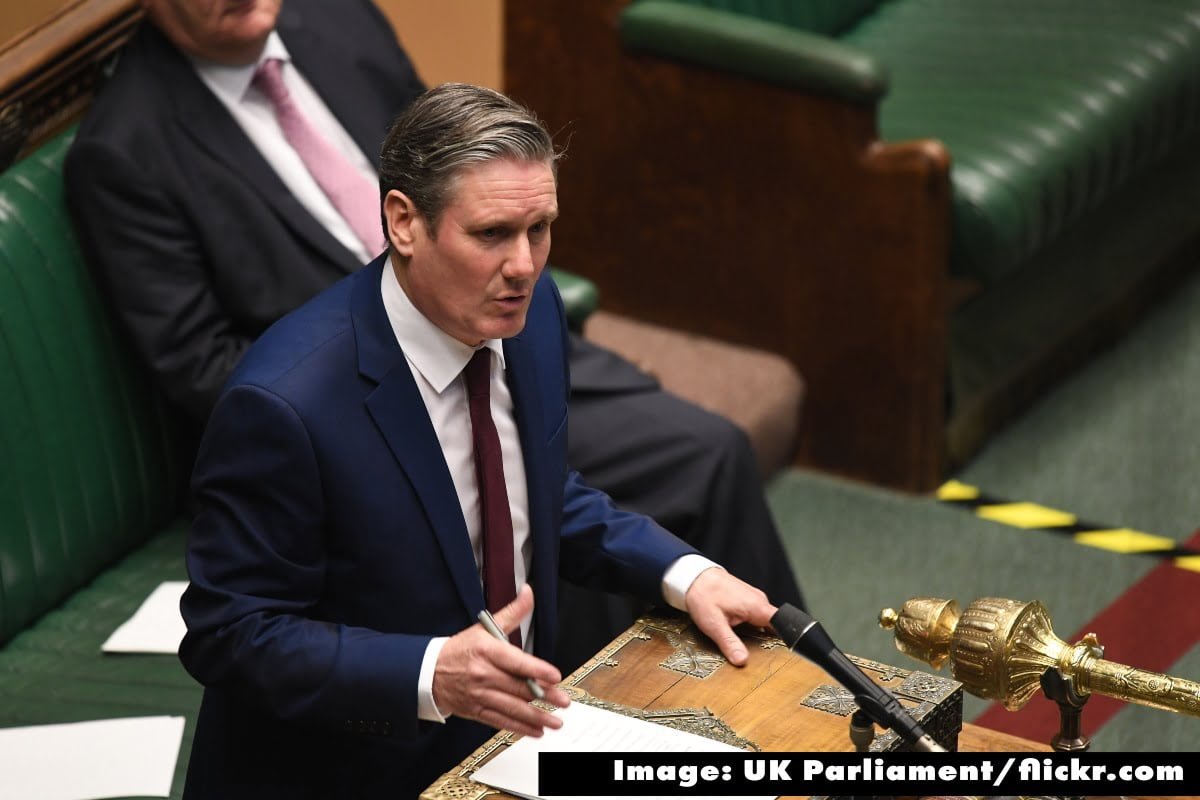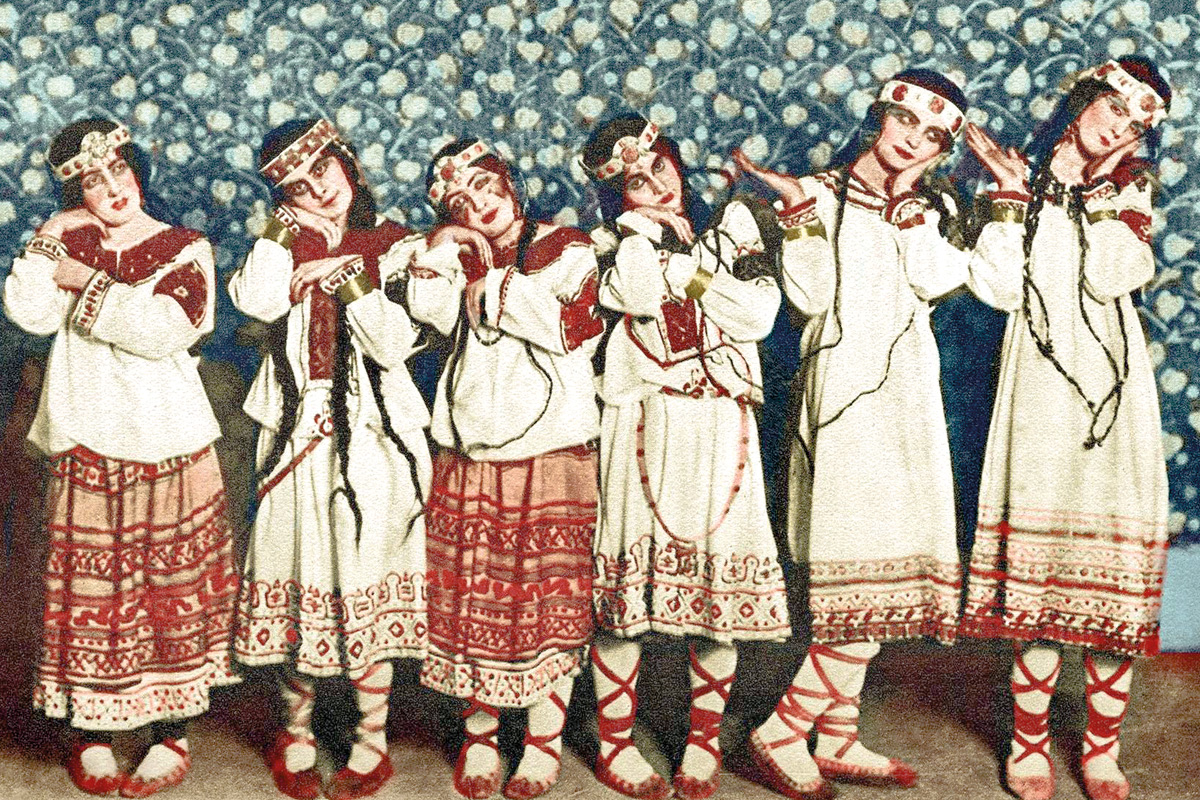Oliver Eagleton’s new book examines the rise and fall of the Corbyn movement, and how ‘Sir’ Keir Starmer came to lead the Labour Party. With the class struggle intensifying, it is vital that the left learns the lessons of these events.
This weekend sees the annual conference of the Labour Party, taking place in Liverpool from 25-28 September.
Given the Queen’s recent death, and ‘Sir’ Keir Starmer’s loyal subservience to the British establishment, this year’s event is likely to be a four-day festival of fervent flag-waving and nauseating nationalism.
Following the left’s defeat at last year’s conference, meanwhile, and the turn of labour movement activists towards the industrial front, alongside campaigns such as ‘Enough is Enough’, there is likely to be little inspiration for workers and youth in terms of policies passed or speeches from the platform.
Civil war

This marks the culmination of the counter-revolution inside the Labour Party, following the demise of the Corbyn movement – a process that is detailed in a recently-released publication from Verso Books.
Oliver Eagleton’s The Starmer Project: A Journey to the Right leads readers through the path that Keir Starmer took to become the leader of the Labour Party.
This ‘journey’ is outlined by way of four main chapters: The Lawyer, The Politician, The Candidate, and The Leader – all rounded by an Afterword, in which the author briefly sets out his own perspective on the future for the left.
Eagleton’s book provides plenty of useful examples demonstrating the shenanigans of the Labour right wing, and the breathtaking compromises of the left leaders.
Most importantly, however, The Starmer Project lacks a class perspective on the civil war that has taken place inside the Labour Party in recent years. Consequently, the book fails to adequately explain Starmer’s real role in the Corbyn era – and therefore cannot fully draw out the lessons that the left must learn from this episode.
Establishment champion
Starmer’s own ‘journey to the right’ turns out to be little more than an awkward shuffle around the same spot.
After attending a grammar school in Reigate, and mildly flirting with left-wing politics in his youth, Starmer became a lawyer, and later was secretary of the Haldane Society of Socialist Lawyers. (With hindsight, no one would be surprised to learn that he tried to exercise the word ‘socialist’ from the title of this organisation.)
Overall, Starmer’s early legal career is characterised by his charting of a careful course between campaigning for honourable causes and overt collaboration with the establishment, most notably as head of the Crown Prosecution Service and Director of Public Prosecutions.
Keir Starmer had not been a member of the Labour Party for long before he was ‘shoe-horned’ into running for Parliament. He won an easy victory in the 2015 election, standing in the safe Labour seat of Holborn and St Pancras.
Class divide

In the chapter entitled The Politician, Eagleton discusses the Corbyn years.
In the wake of the Tories’ election victory in 2015, the #JezWeCan movement led to Jeremy Corbyn becoming leader of the Labour Party – a political earthquake that none of the establishment saw coming.
Eagleton says little about the significance of this event, and the subsequent shockwaves and shivers that it sent through the ruling class. But this was a historic moment, which turned British politics upside down.
Crucially, the author fails to explain that the divide between the Labour right wing and the new emboldened left-wing membership was a class divide. And it was this fact that made the forthcoming battles that Eagleton describes so vicious.
Corbyn gave a voice to the working class, the poor, the oppressed, and the youth. On the other side, meanwhile, were those like Starmer, and many vile Blairite creatures, who stood (and still stand) for the interests of big business and capitalism.
With hundreds of thousands of workers and youth flooding into the party, pushing it to the left, the ruling class – and their agents in the Parliamentary Labour Party (PLP) – feared losing control.
And given the wave of support for Labour under Corbyn, most notably with the mass rallies and surge in the polls in the run-up to the 2017 general election, the British establishment faced a potentially existential threat.
Reading Eagleton’s book, however, one could be mistaken for thinking that the struggles inside the Labour Party simply reflected a difference of opinion between individuals.
Challenges and compromise
Eagleton documents the Corbyn team’s early attempts to compromise with their critics.
For example, Starmer was made shadow immigration minister, and later shadow Brexit secretary, joining a Labour frontbench that included a whole host of dismal right-wing carpetbaggers.
The new leadership quickly faced a series of challenges from the right wing and their billionaire friends in the media. And we learn from Eagleton how Starmer played a star role in many of these attacks.
Yet, instead of mobilising members to sweep out the saboteurs, Corbyn consistently extended an olive branch to his ruthless opponents. But these were never enough for the right wing, who wasted no time in resuming their plots.
As we have repeatedly explained, without a clear class understanding of the challenges they were facing, the left leaders were beaten into making repeated concessions to the right wing and the establishment, buckling to the outrageous smears and slanders thrown at them.
Compromises over Brexit, in particular, were the Corbyn leadership’s ultimate undoing.
Second referendum

The 2017 election brought Corbyn to but a hair’s breadth from obtaining the keys to Number 10. This was another shock for the ruling class, after the already catastrophic Brexit vote.
Eagelton documents how Starmer became a Trojan Horse inside the shadow cabinet for the ‘People’s Vote’ remain campaign – led by Blairite stooges such as Peter Mandelsson, and Murdoch journalist Tom Baldwin.
Pressure from these elements brought the left leaders to their knees, with the party coming out publicly in favour of a second referendum. This then opened up a space for Boris Johnson and the Tory Brexiteers to demagogically present themselves as champions of ‘the people’ against the political establishment.
Despite detailing Starmer’s skillful manipulation of the leadership, however, Eagleton doesn’t explain that the former lawyer’s ambitions were ultimately a reflection of the ruling class’ interests and aims – to win back control of the Labour Party.
The fierce battle inside Labour, in turn, was a struggle of living class forces within the party, with far deeper roots than just Brexit.
Left nihilism
The Candidate chapter describes Starmer’s leadership campaign.
The 2019 election came as a hammer-blow for the Corbyn movement, provoking a muddled reaction from left commentators, as Eagleton describes.
This included assertions that Corbyn should have embraced more mainstream politics, and made even more concessions to the right wing and the capitalist media – all total hogwash!
Eagleton makes his own errors of analysis, however, nihilistically arguing that damaging trends were working against Labour and the left, including the so-called “atomisation of the working class”.
What this forgets, however, is that these so-called ‘trends’, if they existed at all, were cut through in 2017 by an election campaign that mobilised workers and youth en masse with bold socialist policies and a class perspective; a campaign that was narrowly defeated by the sabotage of the right wing, who were allowed free rein to undermine the party and its leadership.
Sowing illusions

Unfortunately, at the time of the 2019 leadership election, many prominent left commentators sowed illusions in Starmer, with his assertions that he would maintain Corbyn’s core policies, whilst ‘ending factionalism’.
As Eagleton shows, however, these naive hopes were sorely misplaced. From the beginning, for example, Starmer’s campaign was supported by Morgan McSweeney – the New Labour official who ran Liz Kendall’s right-wing leadership campaign in 2015.
McSweeney also ran a quasi-think-tank named Labour Together, which was funded by ultra-rich big business private equity brokers.
This was the basis of Starmer’s campaign machine. And although the author never explicitly says so, this demonstrates that Starmer was clearly running on behalf of the capitalist class, to win Labour back for them.
Counter-revolution
In the The Leader chapter, Eagleton describes Starmer’s wholesale betrayal of the many well-meaning leftwingers who voted for him.
In addition, the author shows how Starmer set out to build trust with the general public, by presenting himself as a ‘respectable’ statesman. This was less about building trust with the public, however, and more about working to cement the approbation of the capitalist press and the establishment.
Starmer represented a counter-revolution compared to the leftward transformation of the Corbyn years. And like all counter-revolutions in history, Starmer knew that he had – and still has – the full support of the establishment in his endeavours. As a result, he and the Labour right have shown no mercy in purging the left from the party.
Eagleton describes in great technical detail the measures – in terms of policy and expulsions – that Starmer has taken to move Labour to the right; and how, like night follows day, the left leaders have continued to appease the right in the face of these attacks, all to no avail.
Titanic events

The book’s Afterword suffers from a pessimism that is common to those on the left who only look at the superficial appearance of events, rather than the underlying process.
Eagleton sees the measures taken by Starmer as being possibly “irreversible”. Similarly, he suggests that if another left leadership candidate managed to emerge in the future, they “would again be pressurised to make damaging compromises and concessions”.
The downfall of Corbynism certainly represents a huge setback for the left. But the election of Jeremy Corbyn as Labour leader in 2015 demonstrated starkly how things can – and will – turn into their opposite; how the subterranean pressures building below will eventually burst to the surface.
Capitalism is in the deepest crisis it has ever faced, particularly so in Britain. Workers are beginning to move on the industrial front, taking militant strike action across the economy. And the youth are being radicalised like never before – on campuses and in the streets.
Future political earthquakes will shake the whole of society, including the labour movement. And on this basis, we can safely predict that Labour and the unions will be transformed and retransformed.
Rather than wallow in defeat and pessimism, we must intervene actively in the struggles taking place – and prepare for the titanic and tumultuous events that lie ahead.
Forces of Marxism
Eagleton’s suggestion is to grow the left’s multiple groupings, and “then to cultivate this various flora and enable their cross-pollination”.
This is all very well. But to succeed where previously it failed, the left must fully absorb the lessons of the last decade. Above all, a clear perspective and resolute determination is required – one built upon the ideas of Marxism.
Revolutionary upheavals and explosions are brewing in Britain, and internationally. We need to build the forces of Marxism, in the labour movement and on the streets; to build the leadership that is needed to ensure that the next wave of political struggle will be on a higher level than the last.






